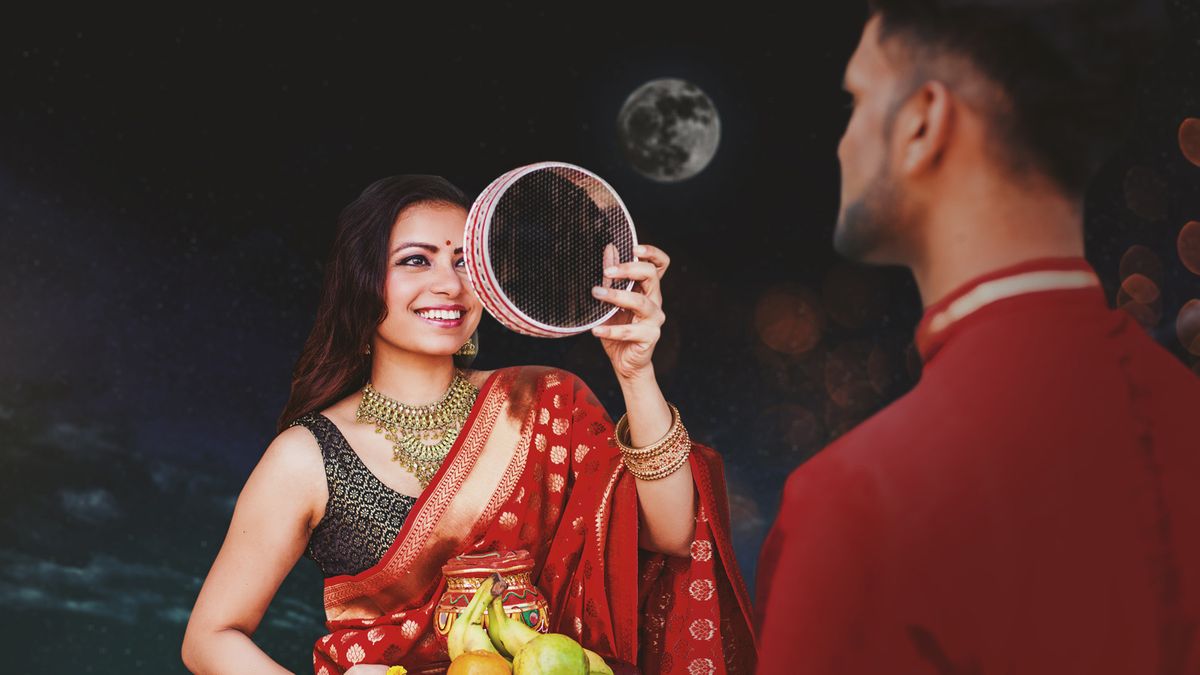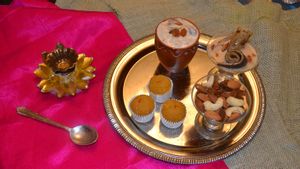Karva Chauth is a grand one-day fast that is observed during Krishna Paksha in the Kartik month of the Hindu lunar calendar. Traditionally celebrated by married Hindu women, Karva Chauth is a fast observed by both married and unmarried women who pray to Lord Shiva from sunrise to moonrise. Married women pray for the well-being and longevity of their husband’s life, while unmarried women pray to Lord Shiva, seeking his blessings in the hope to find their desired life partner. The festival of Karva Chauth was originally celebrated in Northern India, in the states of Punjab, Haryana and Himachal Pradesh. However, Bollywood has glorified this fast, and today women from across the country and cultures observe the fast from morning to night.
Karva or Karak Chaturthi gets its name from the earthen pot (Karva) that is used to offer water during the puja. It is a sacred Hindu puja, and women from all over the country celebrate the festival with immense enthusiasm, pomp and show.

Karwa Chauth 2022
| Karwa Chauth 2022 Date | Thursday, 13 October 2022 From 01:59 AM |
| Karva Chauth Tithi End Time | Friday, 14 October 2022 At 03:08 AM |
| Karva Chauth Moon Rise Time | Thursday, 13 October 2022 At 08:09 PM |
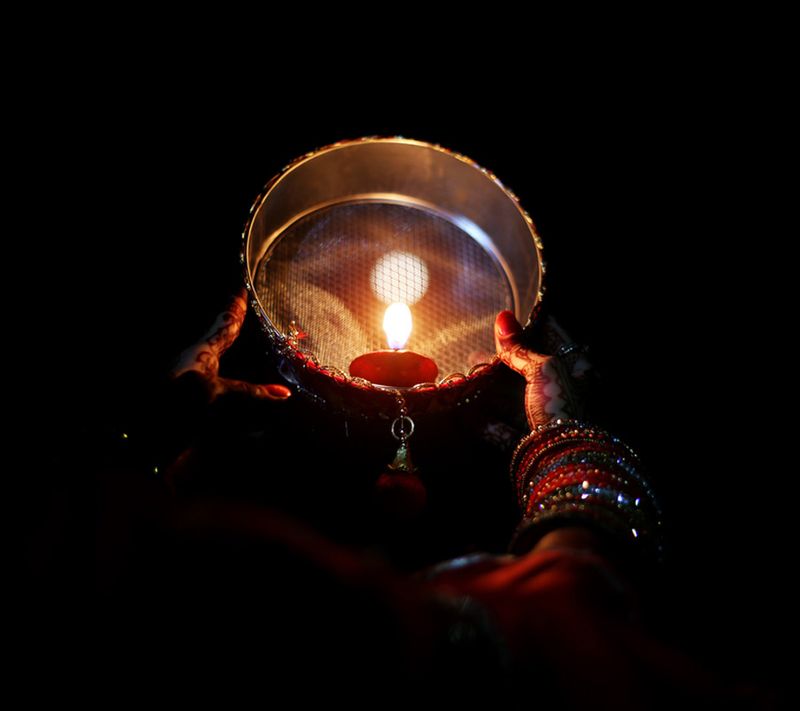
Significance of Karva Chauth
What is Karwa Chauth and the story behind women observing this fast? According to Hindu mythology, there was a queen named Veeravati. She was one beloved sister among seven brothers who adored her. On Veeravati’s first Karva Chauth, she observed the fast at her maternal home, where she waited for the moon to rise so that she could break her fast. Unable to see their dear sister hungry, the brothers tricked her into believing the moon has risen by reflecting a mirror. She broke her fast and left for her husband’s home. Upon reaching, she found her husband in a death-like sleep state.
She prayed for a whole year, and when the next Karva Chauth came, Veeravati broke her fast only after seeing the moon. Her unnerving love revived her husband.
While this is just one of the mythological tales of Karva Chauth, the significance behind keeping a Nirjala fast, one without food and water, is to appease Lord Shiva, Goddess Parvati and Lord Ganesha. It is said that observing a fast on the auspicious occasion of Karva Chauth and praying to Goddess Gauri, the incarnation of Parvati, blesses women with a long and happy marriage. It is a celebration of one of God’s most pure relationships between a wife and her husband, and the lengths she will go to to keep him healthy. This was initially started by women who prayed for the safe return of their husbands who went to fight wars.
Rituals followed for Karva Chauth
Karva Chauth is typically a fast observed by married women. So, all the rituals followed during this fast entail items that are significant to a Suhagan, meaning a married woman. Women dress up in heavy Indian outfits in bright shades of red, just like a new bride. A shringar of makeup, lipstick, jewellery, mehendi, bindi, bangles, payal and more is done to signify a happy married life. Each piece of the solah or sixteen shringar items holds religious significance and is considered auspicious during the festival. The tradition of applying mehendi or henna on the hands and feet is a symbol of good fortune. Women choose intricate and elaborate designs with their husband’s name hidden among floral motifs.
Besides playing dress up, women also prepare sweet offerings to God, that is then eaten with water to break their day-long fast.
Steps to start the Karva Chauth Fast
Morning Rituals
Karva Chauth date 2022 falls on the 13th of October from 1:59 am. Women wake up before sunrise to get ready and eat from their sargi thali. One of the most important rituals of the festival, a sargi thali is given by the mother-in-law to the married daughter-in-law as a gift each year. It includes a variety of food items, dry fruits and gifts that are eaten before sunrise to mark the beginning of the Karva Chauth fast. On the other hand, Bayaa is a package that is sent from the married woman’s maternal home before Karva Chauth. This includes new clothes, coconut, sweets, fruits and sindoor (vermillion) as a sign of blessing the daughter’s marriage.
Karva Chauth Puja
This year, the Karwa Chauth pooja time falls between 5:54 pm and 7:08 pm, on the 13th of October. During this auspicious muhurat, women dress up and come together to pray to Goddess Parvati to bless their marriage and bestow a healthy and long life on their husband. Thalis are decorated with coconut, fruits, dry fruits, a diya (made using whole wheat flour or atta), a glass of kachi lassi (made from milk and water), sweets and channi. The thali is covered with a cloth and circulated seven times while listening to the puja katha or story.
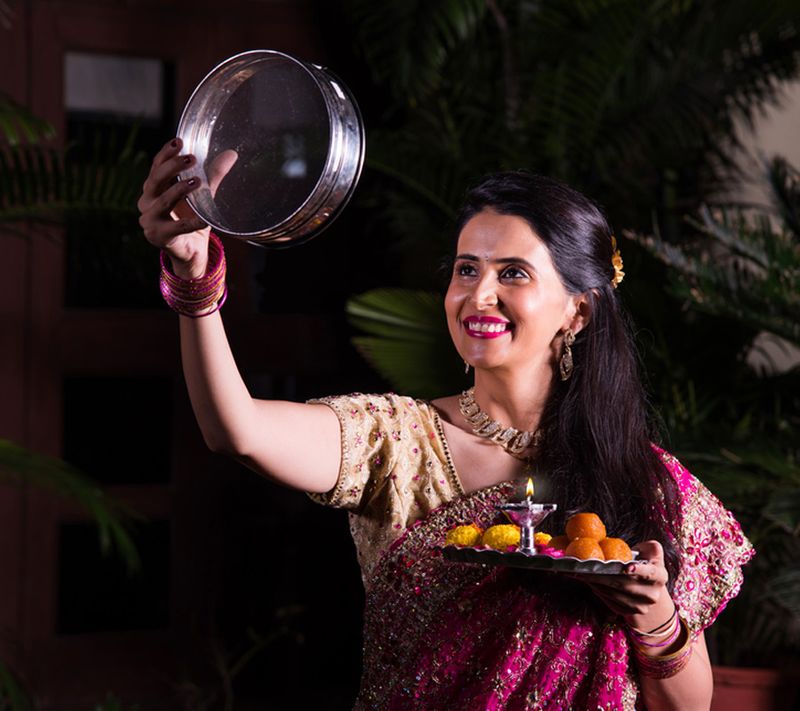
About the Prayer
The thali batana is done with other married women who sit in a circle listening to the story. When the story stops in between, a song called the ‘Veeron Kudiye Karwada, Sarv Suhagan Karwada’ is sung, and thalis are circulated. It is done seven times before commencing the puja. After the story is over, women light the diya, complete their puja offerings to Goddess Parvati and touch the feet of their elders. As a symbol of respect, married women give gifts and dry fruits to their mother-in-law after the Karva Chauth pooja.
How to break Karva Chauth Fast
After fasting the entire day, when the moon shines bright in the night sky, women break their fast. The thali with a sweet, a kalsa with water, a lit diya and channi are usually taken to the terrace or garden, from where the moon is visible. Women first look at the moon through the sieve, give aragh (water), recite a prayer and then look at their husbands.
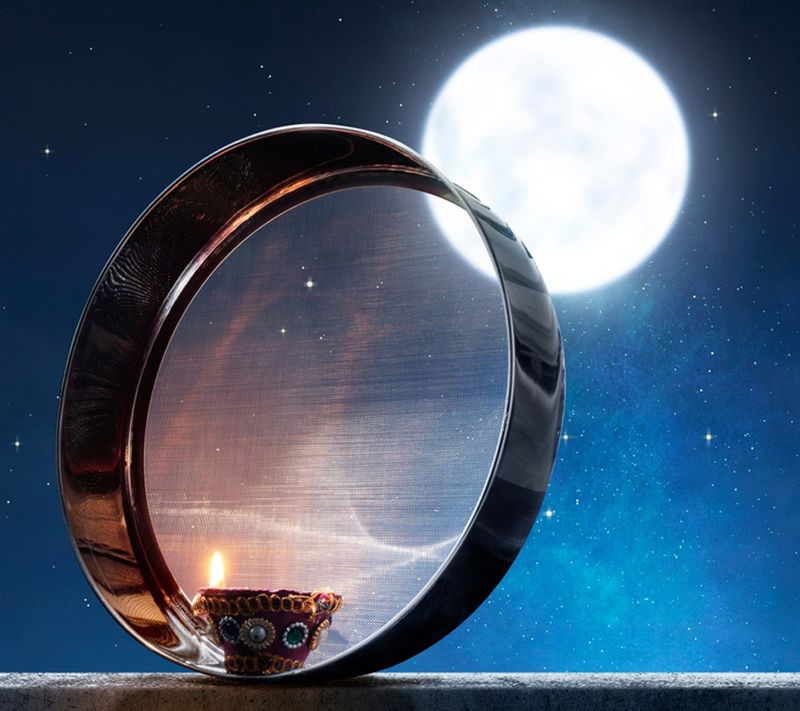
The husband breaks the fast by feeding his wife water and sweets. Blessings are taken from all the older members of the family, after which the family enjoys a meal together.


